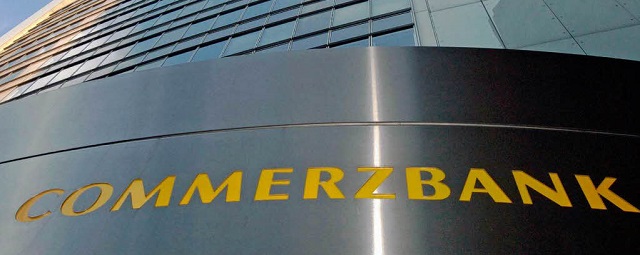From Santander to nationalized Bankia, Spanish banks have closed the first quarter of the year with more than 10% of core capital, according to the European banking authority, and their forecasts for their advanced implementation of Basel III this year is that they are well ahead than Deutsche Bank. Another thing is the situation of entities such as Commerzbank, nationalized in 2008 right at the beginning of the financial and economic crisis, wthich has already resulted in losses to the German State and has the return of millions of dollars of aid pending. Or Hypovereinsbank, controlled since 2005 by Italian Unicredit and involved in fraud scandals.
The German government has criticize the process of recapitalization of Spanish banks could backfire, questioning again the new effort imposed by the Bank of Spain on refinanced loans. Mariano Rajoy executive has been giving a reprimand for failing to use the 100,000 million euros credit line to clean up the financial system. All this may backfire.
The major listed Spanish banks have closed the first quarter of this year with more than 10% of core capital, complying with the standards of the European Banking Authority (EBA), while the first private bank in Germany, Deutsche Bank, is far from that level (8.8%, according to the new Basel III standards will begin to have some effect at the end of the current fiscal year).
In fact, Deutsche Bank executives have been trying since the middle of last year to improve its capital structure, with an accelerated reduction of risk-weighted assets (RWA) of more than 100,000 million euros. The intention have been to issue another 2,000 million in subordinated debt within the next 12 months to improve its Basel III capital ratio to 9.5% by the end of this year.
That goal have been beaten in most cases by Spanish banks. The only exception is BBVA, with a 9% in its estimate using the new international rules on capital, even if at the end of the first quarter it solvency topped 11.2% (among the highest of large Spanish listed groups).
Ambitious goals
The Santander estimates that it will end this year with a capital ratio of 12%, according to these criteria. It has placed its solvency ratio at 10.67% at the end of March. Even smaller banks have more ambitious goals that the first German banking group. Banco Popular is expected to reach a capital ratio of 10.9% of the Basel III criteria by the end of 2013, while Bankinter will get to 10.6% with not much effort.
Meanwhile, Spanish banks are at a disadvantage when measuring risk-weighted assets, since their main business is commercial banking, while Deutsche Bank has a big investment banking division, a business specially favored by its former chairman Josef Ackermann. The case of Banco Popular is quite significant: after the demanding audits by Oliver Wyman, it had to make a macro-enlargement of 2,500 million that has covered itself without aid of any kind.
The situation is very different in one of the other major German banks, Commerzbank, now immersed in an extension of 2,500 million euros to return some of the aid received since its nationalization in 2008. The German government has just begun to withdraw from the capital of this bank, with losses when selling the 25% of the stock they had: they sold the shares at seven euros, and they bought it at 34.70.
Commerzbank, which at the time received public bail out of 18,200 million, still needs 1,630 million from the Financial Market Stabilization Fund (SoFFin, according to its German acronym) and 750 million from insurance group Allianz, which by the way is the reference shareholder of Banco Popular. The German bank has closed the first quarter of this year with a loss of 94 million euros, in contrast to the 104 million profit of the group chaired by Ángel Ron.
Hypovereinsbank, another major German bank, is in the orbit of the Italian Unicredit since November 2005. And it is not going very well: its market value is 645 million euros, far away from the 2,500 million worth Bankinter, the smallest of Spanish banks today. Late last year it was involved in a scandal for allegedly helping customers to evade from the German treasury about 124 million euros, which triggered an spectacular police raid in its headquarters.
Even more opaque is the situation of the German savings banks (Sparkassen), which control the German financial system, especially in the domestic business. They have survived the liberal reluctance to such entities that have wiped out the savings banks in Spain.
Some Spanish banking executives argue, both publicly and privately, that some German banks, or other European countries´, wouldn’t pass tests as demanding as those imposed by Oliver Wyman on the entire Spanish banking system in 2012. It is true that some French groups do have a similar capital ratios Spanish banks, and even higher expectations for the year-end compliance with Basel III requirements. BNP Paribas has closed the first quarter of 2013 with a core Tier 1 ratio of 11.7% and expects to rise it to 10% at the end of the year with the new criteria. Societe Generale, meanwhile, has a solvency of 10.6% through March and aims 9.5% for the year-end.






Be the first to comment on "Spanish banks capital ratio better than Germany’s"